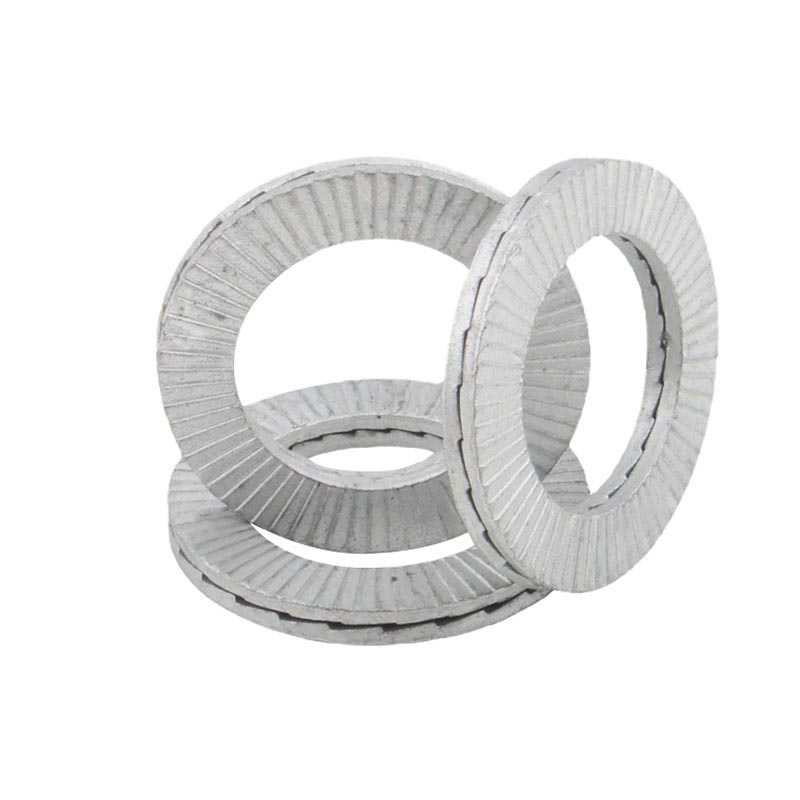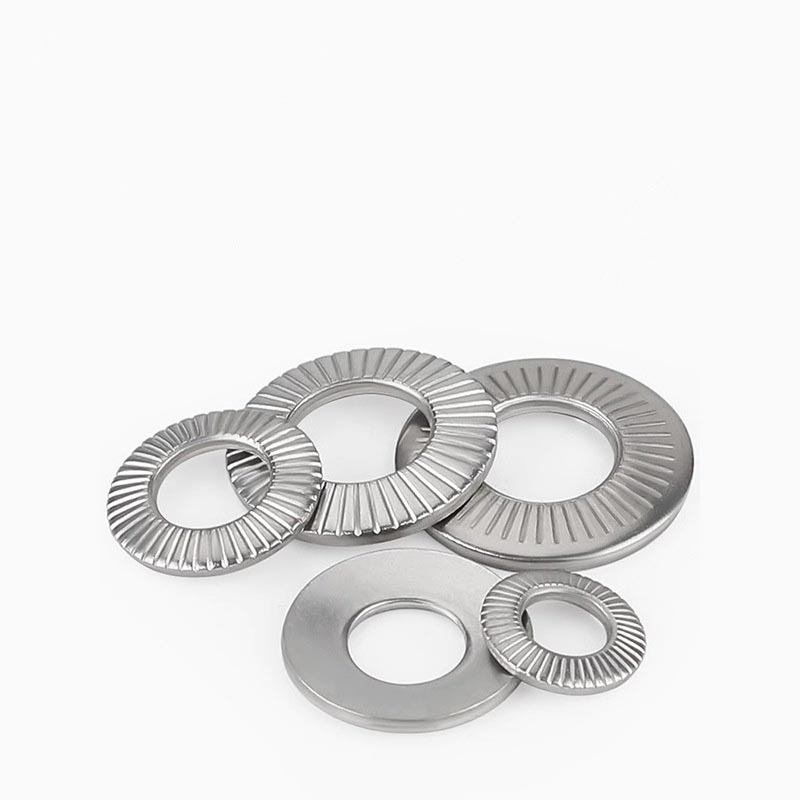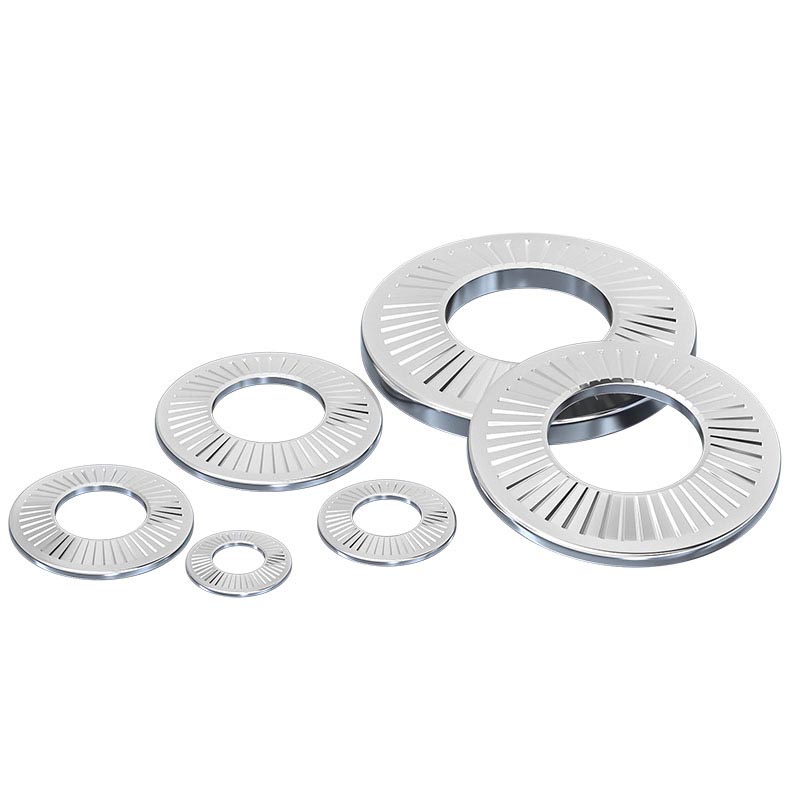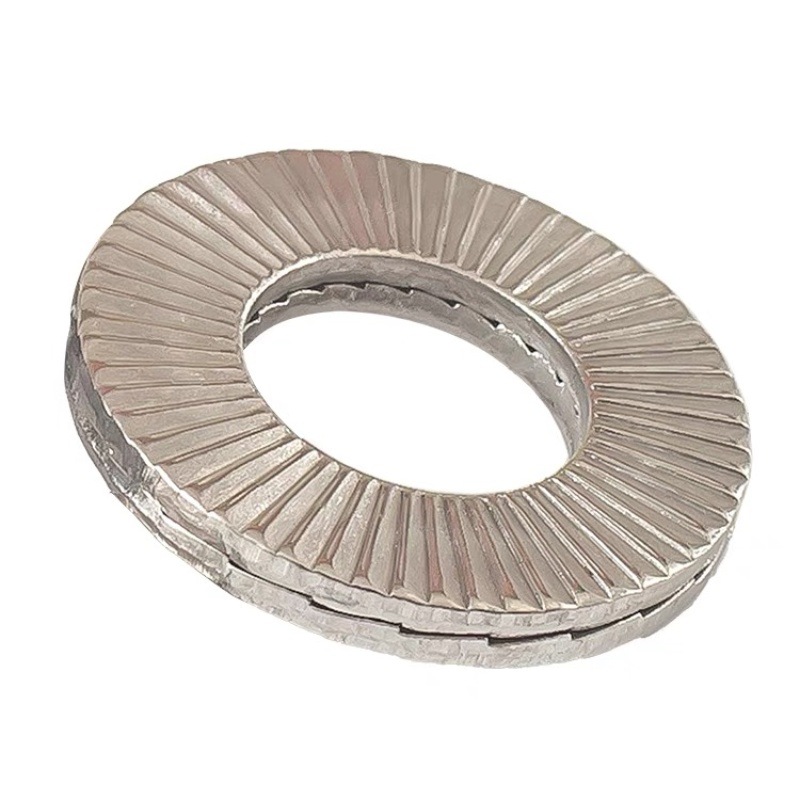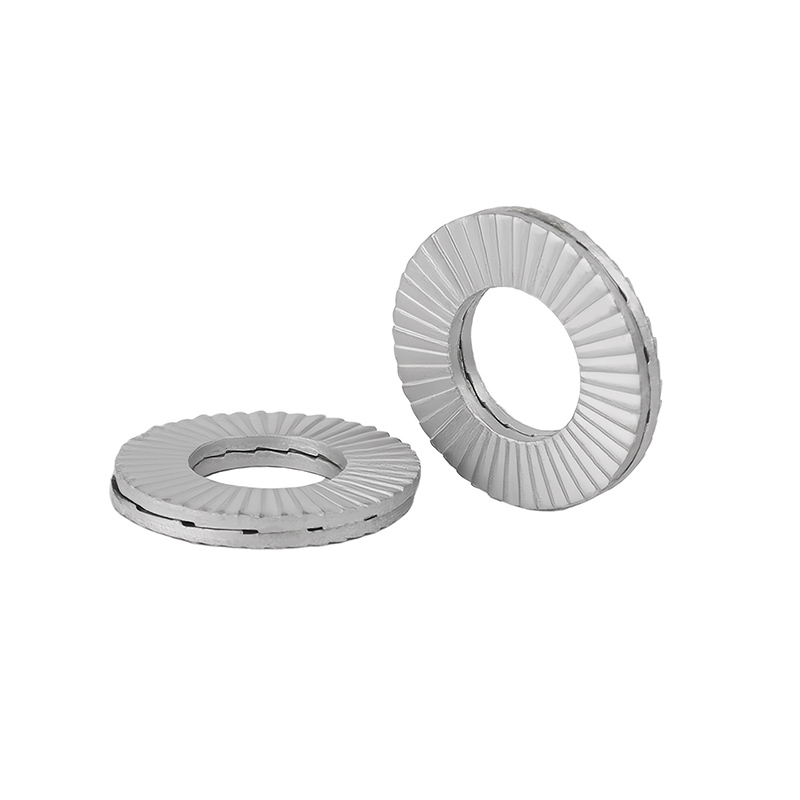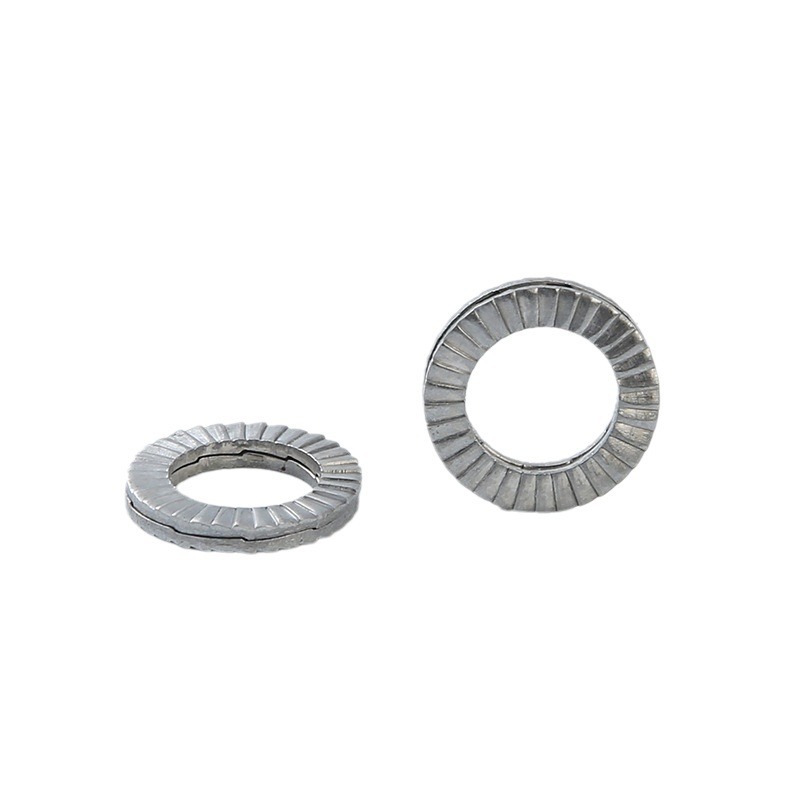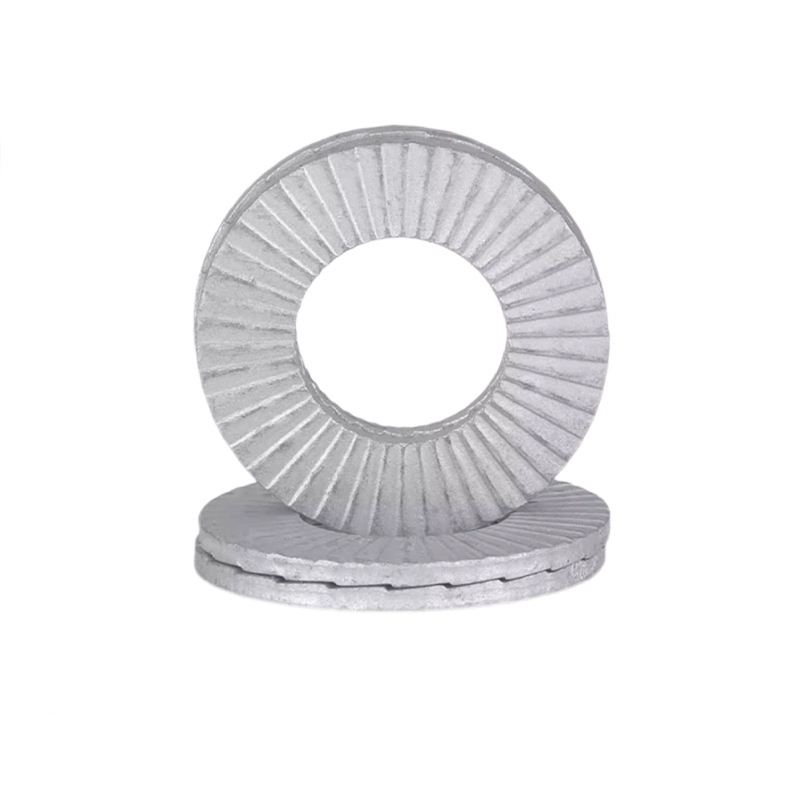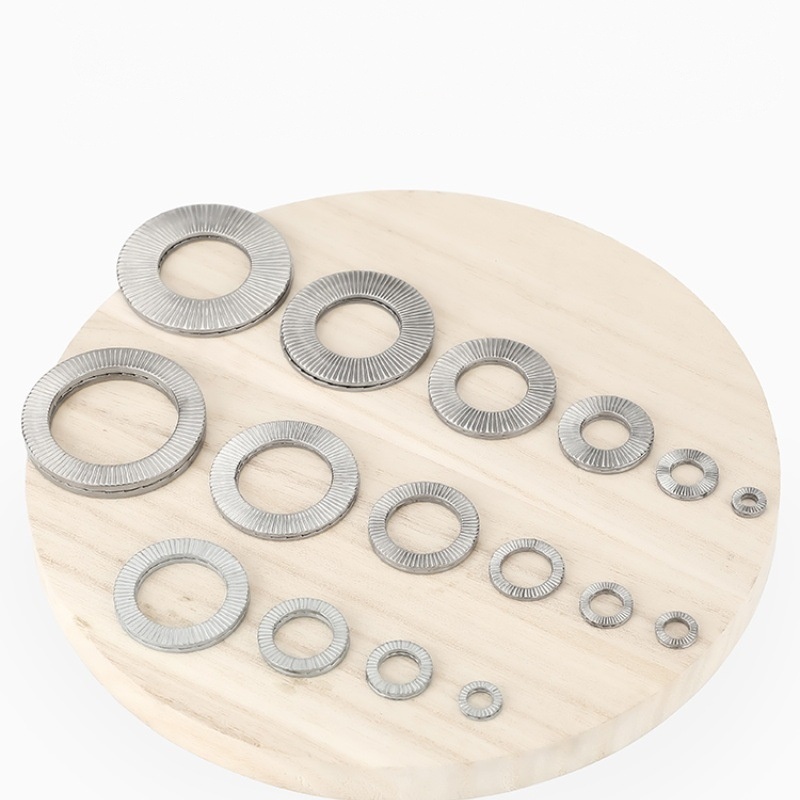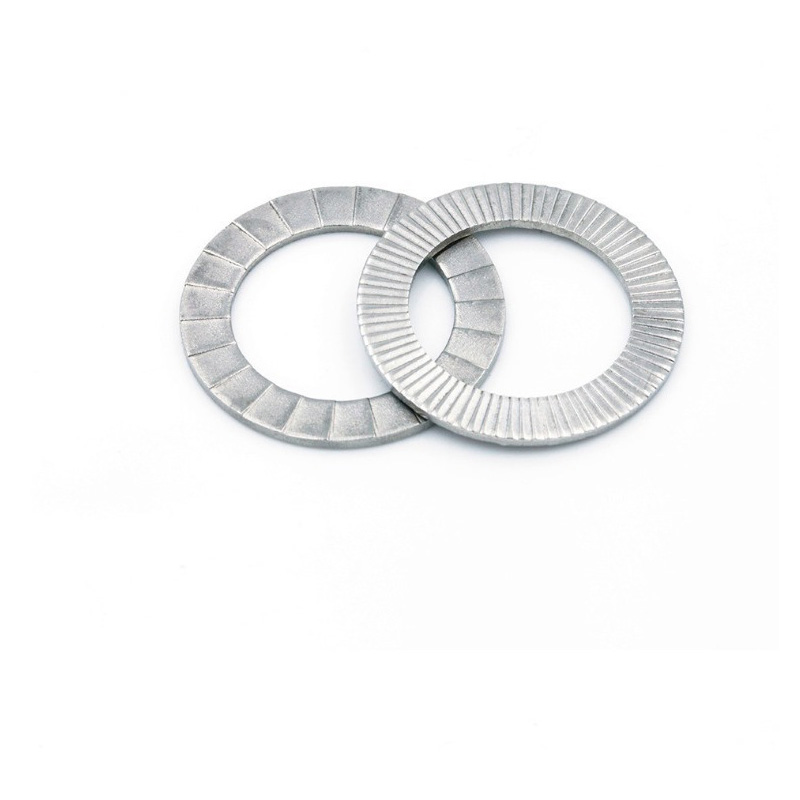Dual Disc Self Locking Washer
Send Inquiry
The dual disc self locking washer is made from SAE 304/316 stainless steel or ASTM A325 carbon steel, mixing strength and flexibility. Stainless steel versions work better in rusty or wet environments, while carbon steel ones have stronger tensile strength for heavy-duty jobs. They use heat treatments like quenching and tempering to make the hardness right (HRC 38-45) and resist fatigue. These materials choices lasts longer and is more reliable than nylon or single-layer washers.
Installation And Maintenance
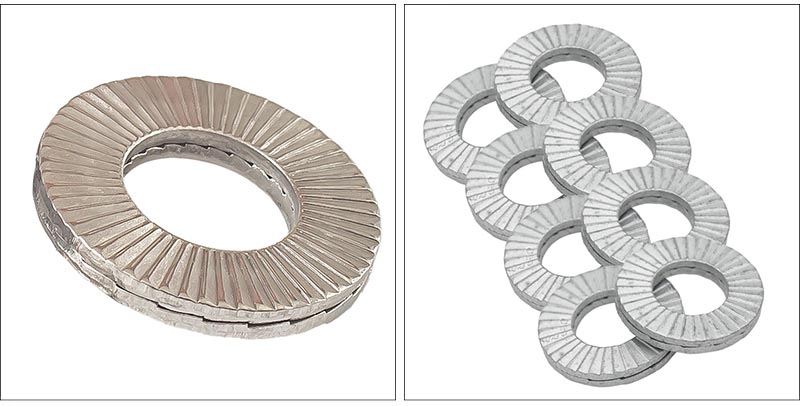
Putting in the dual-disc self-locking washer is simple, no fancy tools needed. Just slip it between the bolt head or nut and the piece you’re attaching. The self-locking part starts working as soon as you tighten the bolt the first time, so you don’t have to mess with it after everything’s put together.
For maintenance, just check the dual disc self locking washer now and then for surface wear or rust, especially if it’s in a rough place. Cleaning it with a mild solvent helps keep it working right. Unlike those washers that use glue, you can reuse this one a bunch of times without it losing its grip, which saves money long-term.
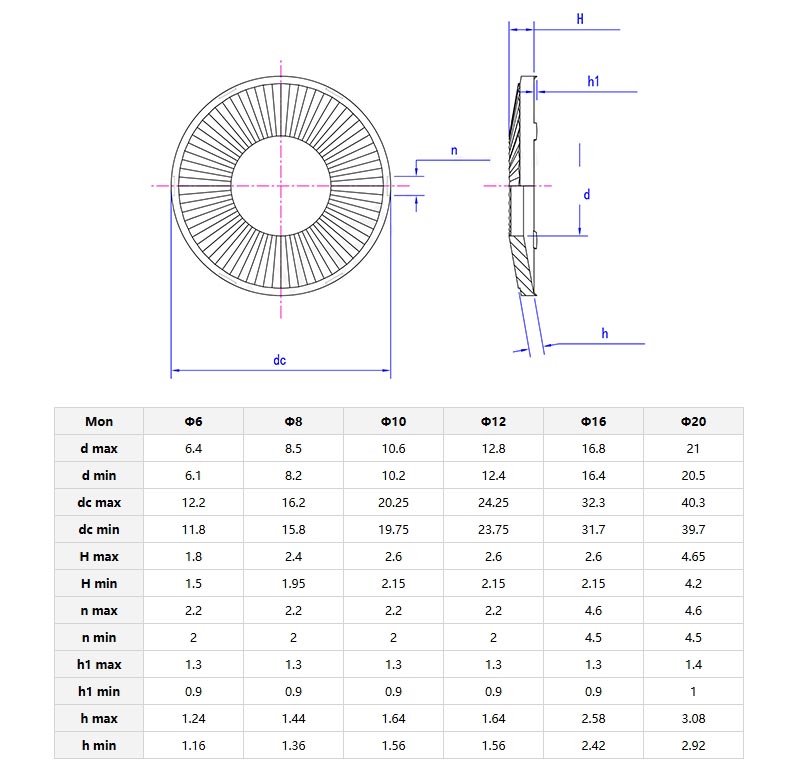
Quality Standards
Q: Are dual-disc self-locking washer compliant with international standards, and what testing certifications do they hold?
A: Dual disc self locking washers are made to follow international standards like ISO 898, DIN 6799, and ASTM F436. Good suppliers offer third-party certificates for things like what the material is made of, how strong it is (tensile strength), and how well it resists corrosion. They do tests to check performance, for example, salt spray tests (like ASTM B117) to see how long they last without corroding, and vibration/shock tests (like DIN 25201-4) to make sure they don’t come loose. Certifications such as RoHS and REACH ensure they meet environmental rules. If you’re a customer, you can ask for mill test reports (MTRs) or industry-specific approvals (like SAE or ASME) to make sure these washers work for your specific needs, especially in important applications.


